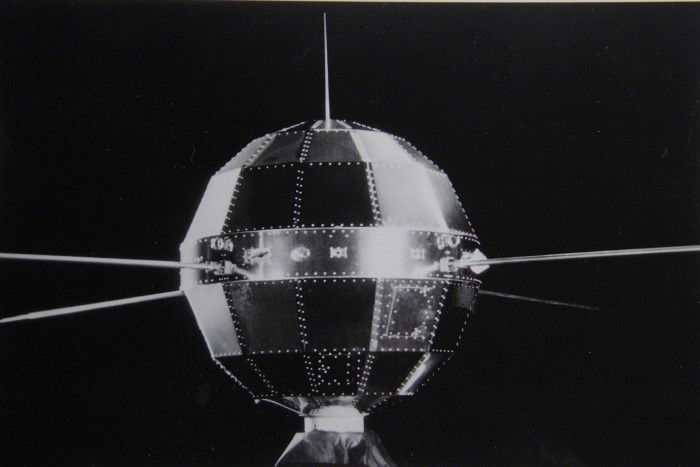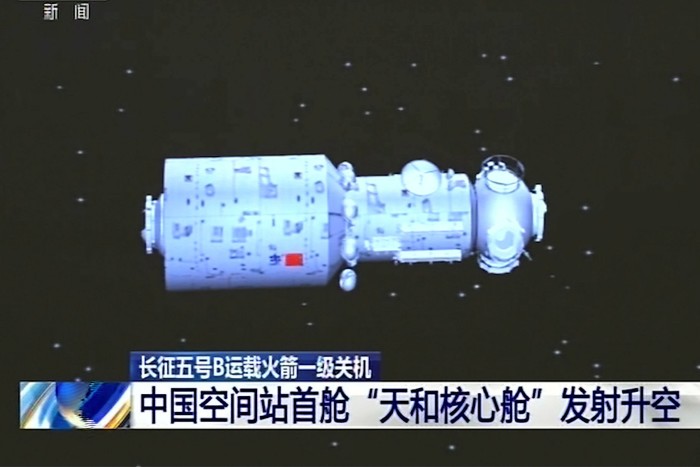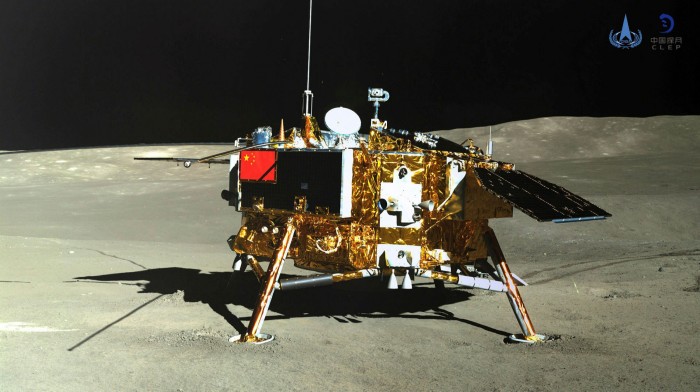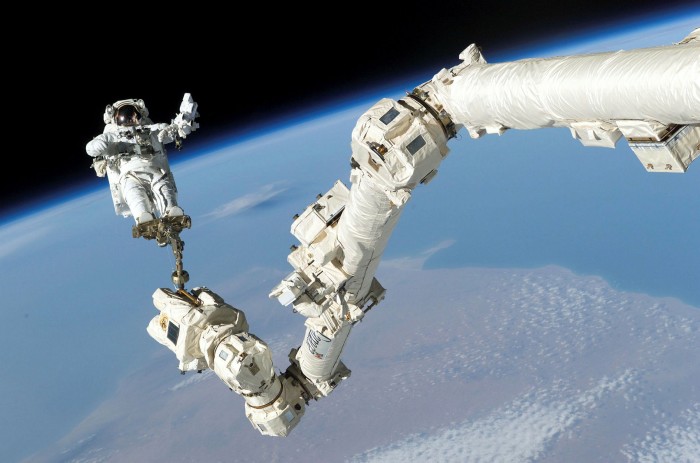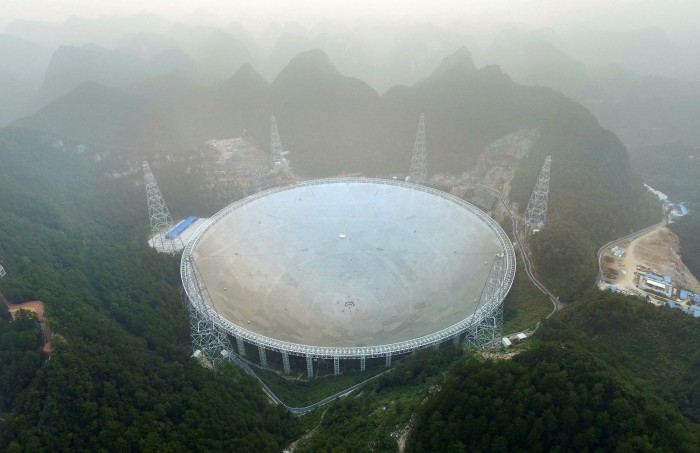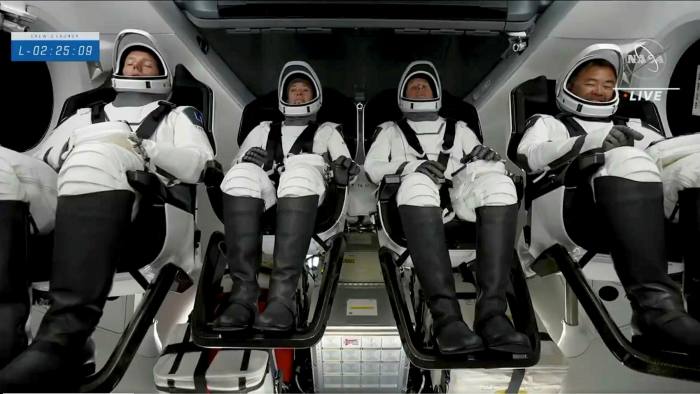[ad_1]
When Chinese engineers launched the first part of the country’s permanent space station into the Earth’s orbit late last month President Xi Jinping told them they had achieved a glowing place in the nation’s history.
“[I] hope you can energetically carry forward the spirit of ‘two bombs and a satellite’,” he wrote in a letter to the mission team published in Chinese state media.
He was using Chinese Communist party code for the three major breakthroughs of the 1960s and early 1970s that were considered essential in securing the young People’s Republic — testing a nuclear bomb, placing it on an intercontinental ballistic missile and launching China’s first satellite.
For Xi, the space station is at the centre of his vision of China as a “space power in all respects” — a global leader of scientific endeavours, economic activity and military might in space.
Half a century after it was inaugurated, China’s space programme has grown from the handful of scientists launching a satellite from the Gobi desert to become an important source of prestige and legitimacy for the party.
Once the space station is completed next year, after a series of additional launches to add scientific laboratory modules, crew and cargo, it will pave the way for crewed missions that aim to take Chinese astronauts, or “taikonauts”, to the Moon some time after 2030.
Beyond human space flight, China is also hoping to land its first rover on Mars later this month. Its commercial space industry boasts more than 150 companies vying to build satellites and launch rockets to meet ballooning demand for extraterrestrial infrastructure and services. At the same time, Moscow and Beijing agreed in March to work together to build a lunar research base.
“As with the US, the Soviet Union and Russia, it’s highly symbolic, it’s very high visibility and it’s maybe uniquely arousing of patriotic sentiment,” says Alanna Krolikowski, a scholar at the Missouri University of Science and Technology. “It’s the equivalent of building cathedrals in the 21st century.”
China wants to be seen as a creator and innovator of the next transformative technologies, Krolikowski adds. Demonstrations of world-leading breakthroughs are in especially high demand ahead of the centenary year of the party’s founding, which will be celebrated in July.
“Social instability might be what keeps China’s leaders up at night but what gets them out of bed in the morning is wanting to make China a science and technology superpower,” she says.
But beneath that grand narrative lurks a dangerous mixture of political mistrust and a lack of international co-ordination that threatens to undermine Beijing’s bid to reap the prestige and economic rewards from being a space superpower. China has developed advanced weaponry capable of knocking out US satellites — part of a growing competition in space with the American military.
Analysts fear that an accelerated pace of rocket and satellite launches, combined with a reluctance to share details of projects deemed of critical national importance, creates ripe conditions for it to stumble into a new space arms race with the US, whether it wants one or not.
One core problem is separating out Beijing’s peaceful and aggressive goals in space. “The difficulty for western policymaking about China’s space programme is that we don’t know what [Beijing] wants to do,” says Mark Hilborne, an expert in defence studies at King’s College London.
With China, the situation is blurred further by an extensive “civil-military fusion” programme that is designed to create a flow of information from the private and civilian sector to military actors.
“It’s an ambiguous operating environment because the technology in space, whether it is a launch vehicle or a satellite, is inherently dual-use,” meaning it has both military or civilian applications, says Hilborne.
Mission knowhow
The space station is only the latest in a series of bold undertakings by the Chinese government. In 2018, the country for the first time launched more vessels into orbit than any other nation.
In 2019, China became the first country to land on the far side of the Moon. And in June last year, it completed the BeiDou satellite constellation, a rival to the US Global Positioning System. Later this month, China could become only the second country after the US to land a rover on Mars.
Projects largely abandoned by the US have been picked up by Beijing, too. The world’s largest filled-aperture radio telescope, a 500-metre dish known as “the eye of heaven”, was completed in 2018. Its mission is in part to aid a search for extraterrestrial intelligence. The US abandoned publicly disclosed federal funding for this pursuit decades ago, although the Pentagon is reported to have its own programme.
Analysts caution that one-to-one comparison of national space programmes advantages are difficult, but many suggest the US still retains a significant lead in operational experience for conducting complex technical feats like landing rovers on Mars compared to China. Nasa’s budget in 2020 was around $23bn, compared with just over $10bn in disclosed public funding for the China National Space Administration.
But even with that gap, the US sees China’s efforts in space in unambiguously strategic terms. Fears of a new arms race are driven by the prospect of China and the US extending a tense diplomatic rivalry into outer space.
“Beijing is working to match or exceed US capabilities in space to gain the military, economic and prestige benefits that Washington has accrued from space leadership,” said the annual threat assessment published by the office of the US director of national intelligence.
A big part of what Washington perceives as a threat derives from China’s preparedness in “counterspace”, an arena of warfare in which countries develop weapons that are able to shoot down or disable the satellites that adversaries use to keep civilian and military information networks running.
Beijing’s progress in such weaponry in recent years has been so striking that leading US analysts say that nowhere in space is safe from the reach of China’s counterspace capabilities.
“China can threaten US military, commercial and civil satellites in all orbits from LEO to GEO,” says Todd Harrison, director of the Aerospace Security Project at CSIS, a Washington-based think-tank. LEO refers to low earth orbit, which is usually put at within 1,000km from Earth, and GEO refers to geostationary orbit, or 35,786km from Earth.
Chinese anti-satellite weaponry includes missiles launched from Earth that are able to destroy targets with a direct hit. But other forms of intervention fall into what experts call “grey zone” actions, such as using lasers to disable satellites by jamming or blinding them or creating false GPS signals, known as “spoofing”.
“This kind of grey zone aggression in space is a real challenge for the US military,” says Harrison. “Some of the most concerning threats are the reversible forms of attack, like jamming communication signals, which can render satellites useless but are not likely to be viewed as a hostile attack warranting a forceful response.”
Hit to collaboration
With the exception of an agreement to work together on climate change, the world’s two largest economies found little common ground in early meetings of top diplomats under President Joe Biden’s administration, and space is an area where competition is more likely than collaboration, analysts say.
Biden has made clear that his administration does not intend to dismantle the US Space Command and Space Force, a new branch of the military services to guide US combat readiness in space established under his predecessor Donald Trump.
Even if the new administration decided it wants to seek more co-operation in space, it would need to overcome a legal obstacle. A 2011 law, known colloquially as the “Wolf amendment”, bars Nasa from working with Chinese scientists over concerns of technology theft. As a result, Chinese taikonauts are unable to visit the US-led International Space Station.
The prohibition has always been controversial among Nasa scientists who are keen to encourage collaboration on civil space programmes, but changing the law would likely be politically costly for Biden.
At the same time, the inability to work with Beijing on scientific endeavours in space could limit US scientists’ activities after 2024 when the ISS is likely to be decommissioned, leaving the Chinese space station as the only permanent presence in orbit.
Lincoln Hines, a scholar at Cornell University, believes that domestic prestige and soft power, rather than military expansionism, can explain many of China’s activities in space.
“Human space flight is one area that is extraordinarily difficult and expensive and is not an efficient path towards scientific discoveries,” he says. “Mars and human space flight are not really explained by anything other than the domestic prestige function.”
But that still leaves China with a dilemma of trying to avoid a situation where its pursuit of prestige turns into an arms race when it is perceived as threatening by others, Hines adds.
China has attempted to counter suspicion of its space programme by building up an image of co-operation. CNSA has invited foreign scientists to study China’s newly acquired lunar samples and to bid for spots to carry out experiments in microgravity on the space station once it is completed.
CNSA and Russia’s Roscosmos have also said countries are invited to participate in their plans to begin building an International Lunar Research Station around 2026.
The announcement has hinted at a new effort for China and Russia to challenge the US lead in supporting scientific research in space. Russia last month announced it would stop funding the ISS in 2025, ending two decades of collaboration.
Experts caution, however, that the depth of China’s international partnership with Russia remains unclear.
“It is certainly intended to counter US leadership in space, but I am not yet convinced it is anything more than a partnership of convenience,” says Harrison.
Security concerns
Days after China celebrated the successful launch of its space station core module, the potential boost to its reputation was tarnished. The Pentagon announced that it was tracking the uncontrolled entry into the Earth’s atmosphere of the 22-tonne Long March 5B Chinese Y2 rocket, which launched the space station’s core module into orbit.
The risk, albeit small, that the hurtling shell could hit a populated area of the Earth’s surface underscores the potential practical fallout that even a peaceful space race could bring about without international co-ordination to avoid accidents.
Gidon Gautel, an independent space industry analyst, notes that there is growing risk of space debris as nations race to roll out satellite mega-constellations for new advances in broadband.
Corner cutting, such as failing to ensure that satellites can deorbit quickly or be removed from orbit should they fail, is one way that a chain reaction of collisions could be set off, Gautel wrote. A second concern he raised is accidents arising from China and the US rushing to explore geographically similar parts of space, such as the Moon’s South Pole, without first establishing norms of conduct.
Greater international co-operation would require foreign space companies to navigate security concerns over working with China’s state-dominated programme. The country’s two main state-opened groups, China Aerospace Science and Industry Corporation and China Aerospace Science and Technology Corporation, are attempting to catch and then overtake US and Russian capabilities by following a similar progression of missions in less time.
In a bid to close the gap with the US, China has fostered a commercial space sector. But its funding remains at a fraction of the US private space sector — just over $300m in 2019 compared with $4.6bn in the US — and it has yet to play a critical role in China’s national space programme or independently develop game-changing new approaches such as reusable boosters developed by Elon Musk’s SpaceX.
As such, state groups remain central to Beijing’s competition with the US to build out core infrastructure. Last week, China Satellite Network Group, a new centrally-owned enterprise, was established with a mandate to build mega-constellations similar to SpaceX’s Starlink programme.
The group is likely to build on constellation development projects from CASIC and CASC, with plans to build a constellation of 13,000 satellites. It is the first central state-owned enterprise to be headquartered in Xiongan, a city 100km south of Beijing that Xi in 2017 ordered to be turned from a backwater into a technological showcase.
Projects like these are seen as crucial pieces of technology infrastructure for the future that China needs to supply indigenously, says Krolikowski, the Missouri scholar.
“If they could go back in time, China wouldn’t want to be excluded from the creation of the internet,” she says.” It’s analogous to that.”
[ad_2]
Source link

